The Best Wireless Guitar System 2024
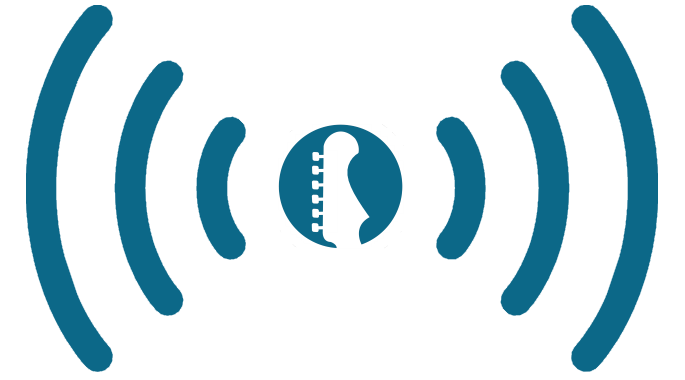
Author & Contributors
Alexander Briones
I have been writing about and researching music gear for many years, all while serving as a music director at my local church. I engage in guitar playing and singer-songwriter stints, in addition to mentoring young musicians and teaching guitar and bass.
The Best Wireless Guitar Systems
Lekato WS-50
The Lekato WS-50 is a compact bug-type digital wireless guitar cable system that operates in the high frequency UHF ISM band, with 24-bit / 48kHz audio quality.
Even the transmitter follows the same compact profile, which makes this wireless unit for guitar very easy to integrate with virtually no space requirements on boards, amps and guitars.
And it does quite a lot for its compact size, with an effective range of 100 meters, 4 channel broadcast, and less than 6ms latency.
Finally, it runs on built-in rechargeable (via USB) lithium battery that can run up to 5 hours when fully charged.
Specifications:
- Transmitter: Lekato WS-50
- Battery: Built-in Rechargeable Lithium Battery (Up to 5 Hours)
- Guitar Cable: Bug Type Plug
- Dimensions: Not Specified
- Weight: 0.39375 lbs. (Total Weight)
- Receiver: Lekato WS-50
- Antenna: Internal
- Operating Range: 328 ft. Line of Sight
- Frequency Range: UHF 5.8GHz
- Frequency Response: 10HZ-22KHz +-1dB
- Rackmount Version: N/A
- Output: 1 x XLR, 1 x 1/4"
- Dimensions: 1/4"< /li>
- Weight: 0.39 lbs.
- Features: Bug-type Transmitter and Receiver
Pros
The Lekato WS-50 is widely considered as a great buy. It impresses users with its wireless guitar cable range and portability, which surpasses expectations given its affordable price tag. It also gets a lot of thumbs up for reliability and for being easy to setup.
Cons
While its 5 hour running time is quite long, it still is not enough for some musicians who play long or multiple sets.
Overall
With its affordable price, compact size, and built-in batteries, it's understandable why many are impressed with the Lekato WS-50.
Shure BLX14
While they are mostly known for quality microphones, Shure is also a market leader when it comes to the best wireless guitar systems.
And the BLX14 is one of their more popular offerings, featuring a traditional combination of bodypack with specialized guitar cable and a single channel receiver.
To simplify setup, Shure equipped the BLX4 with their "QuickScan" technology, which conveniently sets up the wireless for guitar system for you, in unused frequencies.
Speaking of frequencies, the BLX14 is available in four variations, each one working on different bands.
Specifications:
- Transmitter: BLX1 Bodypack
- Battery: 2 X AA (Up to 14 Hours)
- Guitar Cable: WA302 (TA4F to 1/4")
- Dimensions: 4.3" x 2.51" x 0.82"
- Weight: 0.16 lbs.
- Receiver: BLX4
- Antenna: Fixed
- Operating Range: 300 ft. Line of Sight
- Frequency Range: 512 - 542 mHz
- Frequency Response: 50Hz-15kHz
- Rackmount Version: Shure BLX14R
- Output: 1 x XLR, 1 x 1/4"
- Dimensions: 1.57" x 7.4" x 4"
- Weight: 0.5 lbs.
- Features: Single Channel Receiver, One-Touch Quick Scan, Up to 12 Compatible Systems per Frequency Band
Pros
This edition sees the Shure BLX14 retaining its #1 position as the best rated guitar wireless system. While there are cheaper options, users still consider the BLX14 as a great value buy, because of how consistently well it performs. It continues to get praise from users who have been using their BLX14 system for many years without fail. Ease of setup is also complemented, along with the solid feel of both the receiver and bodypack transmitter.
Cons
Not many complaints reported, other than a few who rated it slightly lower, but still comment positively.
Overall
The Shure BLX14 is an accessibly priced wireless system from a reputable brand, heed market recommendations and check it out.
Shure PGXD14 Digital
There's no denying Shure's dominance in the wireless market, thanks to their reputation for both quality and reliability. So it's not surprising at all to find their brand securing multiple spots in this list.
The PGXD14 in particular is a highly rated digital wireless guitar system that operates in the UHF band, and streaming 24-bit / 48kHz quality digital audio.
To be specific, this system operates in the 900 MHz range, with up to 5 compatible channels per frequency band.
Speaking of channels, the streamlined interface lets you select your preferred channel, or have the unit pick one for you via the sync button.
The receiver has two fixed antennas that allow for true digital diversity signal reliability.
The transmitter has its own antenna and a mute button.
Specifications:
- Transmitter: PGXD1 Bodypack
- Battery: 2 x AA (Up to 9 Hours)
- Guitar Cable: W302 (TA4F to 1/4")
- Dimensions: 4.25" x 2.52" x 0.75"
- Weight: 0.28 lbs.
- Receiver: PGXD4 Table Top
- Antenna: Fixed
- Operating Range: 200 ft. Line-of-Sight
- Frequency Range: 900 MHz
- Frequency Response: 20Hz - 20kHz
- Rackmount Version: N/A
- Output: 1 x XLR, 1 x 1/4"
- Dimensions: 1.6" x 7.125" x 4.1"
- Weight: 0.64 lbs.
- Features: Up to 5 Channels Per Frequency Band, One-Touch Sync, Auto Frequency Selection, True Digital Diversity, Gain Adjustment
Pros
Many guitarists rated the Shure PGXD14 highly because of its sound quality. And it's not just limited to standard 6-string guitars because some of the positive reviews were written by satisfied bassists. Heavy duty build and reliability are also prominently mentioned, a testament to Shure's reputation for being dependable.
Cons
There were a few users who wanted the receiver to be rackmountable. Some find the price to be a bit on the high side, although they still gave high ratings.
Overall
If reliability is high in your list of considerations, then consider the Shure PGXD14.
Sennheiser EW 100 G4-Ci1
Sennheiser is a brand well known for high quality microphones, but they also offer a variety of pro audio gear, including wireless guitar systems.
The EW 100 G4-Ci1 in particular is meant for use with guitar and bass, a bundle that includes the SK 100 G4 bodypack transmitter, and the EM 100 G4 true diversity rackmountable receiver.
It lets you choose from 1,680 tunable UHF frequencies across a 42mHz bandwidth to choose the frequency with no interference.
The bodypack transmitter can run on two AA batteries and comes with nifty features that include a graphic display.
The half-rack receiver has a bigger LCD display for easier control and monitoring.
The system has a frequency response of 25Hz–18kHz, and other features include infrared sync, multi-linking, built-in 5-band EQ and cable emulation.
Cable emulation tweaks your sound to behave much like when you're plugged to a cable, and it lets you adjust the length of your virtual cable.
Specifications:
- Transmitter: SK 100 G4 Bodypack
- Battery: 2 x AA (Up to 8 Hours)
- Guitar Cable: Ci1 to 1/4"
- Dimensions: 3.22" x 2.52" x 0.95"
- Weight: 0.35 lbs.
- Receiver: EM 100 G4 Half-Rack
- Antenna: 2 x Detachable
- Operating Range: 330 ft. Line-of-Sight
- Frequency Range: 470-516 MHz (A1 band)
- Frequency Response: 25Hz-18kHz
- Rackmount Version: N/A
- Output: 1 x XLR, 1 x 1/4"
- Dimensions: 8.35" x 1.7" x 6.61"
- Weight: 2.16 lbs.
- Features: Cable Emulation, Built-in 5-band Equalizer and Soundcheck mode
Pros
Sound quality is the number one reason why owners are rating this system highly. They describe the sound as clear and quiet, and this description comes from users who have used this system in various venues and musical styles. Many also appreciate how easy it is to setup, even when there are already multiple wireless guitar systems already set up that could interfere with the signal. Finally, owners report that both the body pack and half rack receiver feel solid and many commend their reliability.
Cons
There are a few reports of interference, but they were able to fix the issue with some tweaks.
Overall
Hard to go wrong with Sennheiser, there's a reason why they are the go-to brand when it comes to sound clarity and quality.
Sennheiser EW 500 G4-Ci1-AW+
The Sennheiser EW 500 G4-Ci1-AW is a wireless package that joins the EM 500 G4 receiver with the SK 500 G4 bodypack transmitter.
The receiver comes with an OLED display that makes it easy to setup or tweak the system.
It also comes with LED notifications (blue sync & red warning), Pilot Tone Squelch for preventing noise when transmitter is off, and Auto-Lock to prevent unwanted setting changes.
Soundwise, it comes with built-in EQ, soundcheck mode, and HDX compander.
The body pack transmitter can run up to 8 hours on two AA batteries and has a long operating range of 330 ft. Line-of-Sight.
The system allows for up to 32 compatible channels, and up to 88 MHz bandwidth with 3,520 frequencies to fine tune and choose from.
Specifications:
- Transmitter: SK 500 G4 Bodypack
- Battery: 2 x AA (Up to 8 Hours)
- Guitar Cable: Ci1 to 1/4"
- Dimensions:3.32" x 2.57" x 1.22"
- Weight: 0.35 lbs.
- Receiver: EM 500 G4 Half-Rack
- Antenna: 2 x Detachable
- Operating Range: 330 ft. Line-of-Sight
- Frequency Range: 470-558 MHz (AW+ band)
- Frequency Response:25Hz-18kHz
- Rackmount Version: N/A
- Output: 1 x XLR, 1 x 1/4", 1 x Ethernet
- Dimensions: 8.35" x 1.7" x 6.61"
- Weight: 2.16 lbs.
- Features: Cable Emulation, Built-in 5-band Equalizer and Soundcheck mode
Pros
This best wireless guitar transmitter is rated highly for its sound clarity and noiseless operation, one user described it as truly professional sounding. The ability to move freely even on big stages is well appreciated, thanks to its wide range of operation. It also gets praised for being easy to setup, thanks to its auto sync function.
Cons
There are a few who aren't too happy with the manual.
Overall
If you're looking for a wireless guitar transmitter with more frequencies to work with, then do check out Sennheiser EW 500 G4-C1-AW+.
The Best Guitar Wireless System for Pedalboards
Boss WL-50 Pedalboard Wireless Guitar System
The Boss WL-50 is a wireless system that comes in a Boss stompbox shape, making it easy to inject into pedalboards.
It is also meant to be as easy to use as their effects pedals, for instant wireless connection with 2.3ms latency.
The main unit takes on the task as both the receiver and charger for the transmitter, which docks securely on the unit.
It has a switch that lets you activate its built-in "cable tone" simulation, allowing you to choose between Short and Long, or to totally bypass the feature.
The transmitter runs on a built-in rechargeable battery for up to 12 hours of continuous playing time, with a 20-meter line of sight range. It also has a mini USB port that lets you charge it separate from the receiver.
Finally, the receiver can run on two AA batteries or via an optional power adaptor, much like regular pedals. If you choose to get the PSA-S adaptor, the receiver has a DC output that lets you distribute power other pedals.
Specifications:
- Transmitter: Boss WL-T 6.3mm (1/4”) Transmitter
- Battery: Rechargeable Lithium Ion Batteries (Up to 12 Hours)
- Guitar Cable: Bug-Type and Extension cable 6.3mm (1/4”)
- Dimensions: 3.43" x 0.87" x 1.43"
- Weight: Not Specified.
- Receiver: Boss WL-50 Pedalboard Receiver
- Antenna: Internal
- Operating Range: 65 ft. Line-of-Sight
- Frequency Range: 2.4 GHz
- Frequency Response: 20Hz-20kHz
- Rackmount Version: N/A
- Output: 1 x 1/4"
- Dimensions: 2.87" x 4.81" x 2.25"
- Weight: 0.5 lbs.
- Features: Built-in Cable Tone Simulation, DC Output (For powering other pedals)
Pros
"Working as intended" is a good summary of market sentiment towards the Boss WL-50. The main reason why users rate it highly is its convenient plug-and-play design, which is very easy to setup and use. Coming from Boss, reliability is a given, and this is reflected in reviews. Being easy to integrate into pedalboards is another reason why many are pleased with this system.
Cons
Given that this uses a bug type transmitter, it may not fit into guitars with recessed jacks, but it does work with Strats, LPs and other popular guitar types. Note that the transmitter may not work with some active pickup equipped instruments. Being too close to a 2.4Ghz WiFi router can sometimes cause interference or dropouts, this is a common issue with 2.4Ghz wireless unit for guitar. General advice is that putting more distance between the router and this wireless unit helps resolve the issue.
Overall
The Boss WL-50 is a great set and forget wireless system for those who utilize pedalboards.
Sennheiser XSW-D
The XSW-D is a pedalboard friendly wireless system, packing Sennheiser's wireless technology into an easy-to-use stompbox style receiver.
Gone are complex connection features, because this system uses a one-touch connect design that utilizes 2.4GHz digital transmission.
In addition to being a receiver, the XSW-D receiver pedal also doubles as a high-quality digital tuner, complete with front panel LCD display - this means you can replace a tuning pedal on your pedalboard so as to not require any additional board space..
The compact bug-type transmitter has a 250-foot operating range, and can run up to five hours on a single charge.
Sennheiser even included an extension cable in case you want to clip the bug-type transmitter to your strap or belt instead of plugging straight to your instrument.
Another interesting feature is its multiple output options, which also include an XLR out for going straight to a PA board.
Specifications:
- Transmitter: XSW-D 6.3mm (1/4”) Transmitter
- Battery: Rechargeable Lithium Ion Batteries (Up to 8 Hours)
- Guitar Cable: Bug-Type and Extension cable 6.3mm (1/4”)
- Dimensions: 4.8" x 0.9" x 1.1"
- Weight: Not Specified.
- Receiver: XSW-D Pedalboard Receiver
- Antenna: Internal
- Operating Range: 250 ft. Line-of-Sight
- Frequency Range: 2,400 - 2,483.5MHz
- Frequency Response: 10 - 18,000 Hz
- Rackmount Version: N/A
- Output: 1 x XLR, 1 x 1/4"
- Dimensions: 5.1" x 3.2" x 2"
- Weight: Not Specified.
- Features: Built-in Tuner, Extension Cable for Transmitter
Pros
Owners are pleased at how the Sennheiser XSW-D freed them to move around and have more fun while performing. Another fun aspect is how easy it is to integrate into your setup, thanks to the stompbox form factor of its receiver. As expected from a Sennheiser product, sound clarity gets a lot of thumbs up.
Cons
Because of their smaller size, bug-type transmitters usually have shorter range compared to bigger body pack type transmitters. But for many, the range of this pedal transmitter is more than enough for most gigs. Lack of proper control over frequency operation can also be an issue in big productions with many of the best wireless systems being used.
Overall
If you're looking for a simple and fun way to get untethered playing, then check this out.
Things To Consider When Buying a Wireless Guitar System
-
- Analog Wireless Systems are still commonly used, thanks to their range, practicality and accessibility. They transmit your analog guitar signal via VHF(30MHz to 300MHz) or UHF(300Mhz to 3GHz) frequencies, much like analog radios would. Since VHF frequencies are being used by TV and Radio stations, they are more susceptible to interference, which means that they can only be viable in areas with low VHF interference. On the other hand, UHF is less crowded and allows for more wireless systems to operate simultaneously. Still they are limited by the various location-specific UHF frequency regulations.
- Digital Wireless Systems are considered industry standard, because of their secure digital encryption and improved resistance to radio interference. It also helps that most of them operate on globally unlicensed frequencies, much like Wi-Fi routers (although there are still some digital wireless systems that operate in UHF). They are easier to setup and use with their automatic frequency detection and grouping features. On the flip side, digital wireless systems are more expensive, but they are getting more affordable as production and market competition increases. Since most wireless guitar systems use the 2.4Ghz range, they are sometimes susceptible to interference from devices that operate in the same range, like Wi-Fi routers. Often times, these interferences are resolved by putting more distance between your wireless system and the other Wi-Fi device. Keep this in mind when setting up or when encountering issues as you play, hopefully during sound check.
-
While wireless systems now use frequencies more efficiently, there will still be a limit to how many wireless systems can work together within the same frequency range. This is important when setting up multiple wireless systems that work simultaneously. Thankfully, some analog systems are produced with different frequency bands, to ensure they don't clash with other systems. Digital systems can be configured to choose clear channels to avoid this problem, but there are specific limitations to how many you can use simultaneously.
You also have to consider other radio emitting devices that may introduce interference to your system, this includes TV, microwave ovens, radio communication devices and more. To help with this, some wireless systems can scan the frequencies and use ones with the least interference.
-
Based on the specifications, analog systems have more range, which means that you can move further from the receiver. Still, the range offered by digital systems are usually more than enough to cover even big stages. Note that solid objects between the receiver and transmitter can decrease the range. We have included the ideal maximum range (usually line of sight) of each wireless system, to help you find one that suits your needs. Wireless guitar systems have similar range as Wireless Microphones.
- Wireless receivers come in four form factors - table top, rackmount, bug type and pedal. You'll want one that will integrate easily into your existing rig. Best to have one in pedal form if you don't have other rackmount gear, and the reverse is true if you tour professionally and want the security and reliability of rackmount gear. Some table top wireless systems are convertible to rackmount via optional mounting kits. Transmitters mostly come in belt/body pack form, and they connect to your guitar via a short cable. More recent transmitter models come in bug-type profile that connect directly to your guitar, and some even make receivers that follow the same compact form factor.
- Ideally, sound differences between using a cable and a wireless system should be negligible, but this is not always the case as we've seen on some reviews. For this reason, some wireless systems come with tone shaping elements, emulating guitar cables by subtly trimming the high frequencies. While sound quality in general is subjective, review ratings are a good indication of good quality.
- While gathering review data, we found that the transmitter guitar cable is usually the weakest link in a system. And since they are mostly specialized cables which you can't just buy off the shelf, you'll want to take good care of them while in use, and store them properly.
- While these are not necessarily important, having extra features can add value and even allow you to let go of some of your existing gear. Common guitar friendly features include built-in guitar tuner and mute. Wireless guitar systems are often paired with wireless In Ear Monitors, for untethered freedom.
Digital vs Analog
Frequency Allocation and Interference
Range/Distance
Form Factor
Sound Quality
Transmitter Guitar Cable Handling
Guitar Friendly Features
If you are looking for tips on wired microphones for recording acoustic guitar, check out our recommendations for the best mic for acoustic guitar.
Best Wireless Guitar System Selection Methodology
The first edition was published in 2017.
For this edition, we looked at all the current top rated and popular wireless guitar systems that are being sold by major retailers in the USA, resulting in a short-list of 37 for further analysis, all of which can be seen in the Music Gear Database. We then gathered over 30,500 relevant sources, which included reviews, ratings, feedback, recommendations and comments. All of these were then processed with the Gearank Algorithm to produce rating scores out of 100 that indicate market sentiment about each wireless system. We used these scores to narrow down the list to just the top rated systems. For more information about our methods see How Gearank Works.
About the Author and Contributors
Here are the key people and sources involved in this guide's production - click on linked names for information about their music industry backgrounds.
Lead Author & Researcher
Alexander Briones
I have been writing about and researching music gear for many years, all while serving as a music director at my local church. I engage in guitar playing and singer-songwriter stints, in addition to mentoring young musicians and teaching guitar and bass.
Drawing from his experience in performing and recording, he teaches guitar and bass and mentors young artists to be better musicians. And when he is not busy playing or tinkering with musical gear, he puts on his entrepreneurial hat, which helps fund his passion for collecting guitars, mecha figures and Gunpla kits.
Contributors
Jason Horton: Editing and Illustrating.
Media
Main/Top Image: Copyright © 2020 Gearank.com.
The individual product images were sourced from websites, promotional materials or supporting documentation provided by their respective manufacturers.



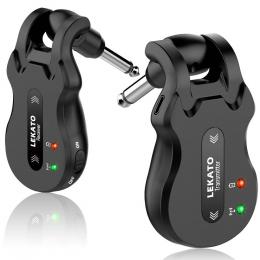
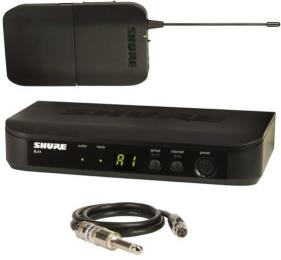
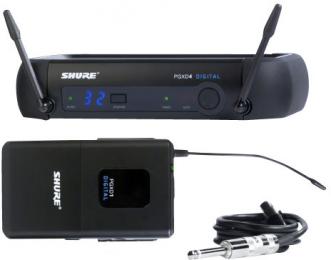
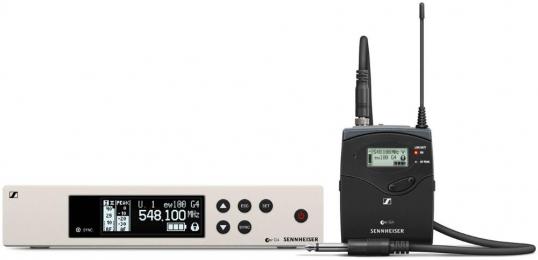
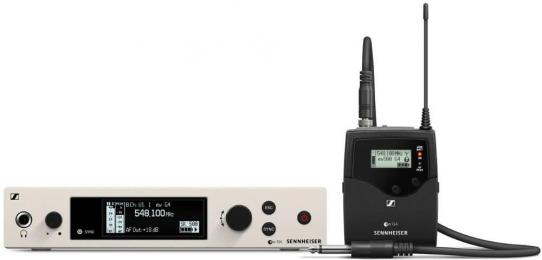
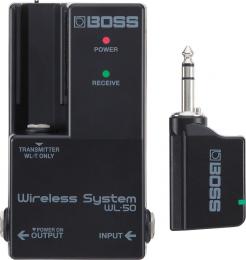
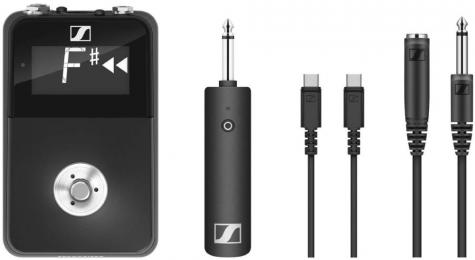
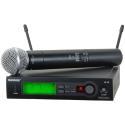
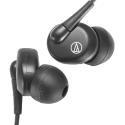
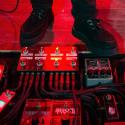
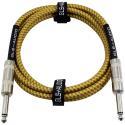
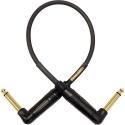
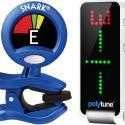
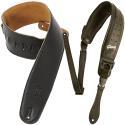
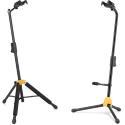
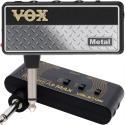
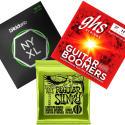

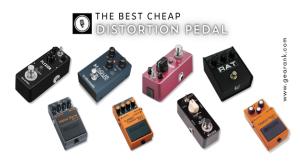
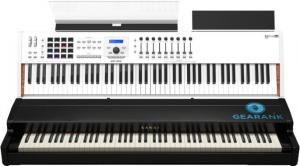
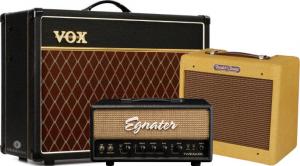
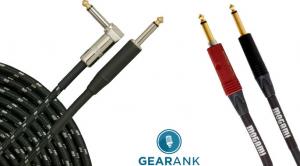
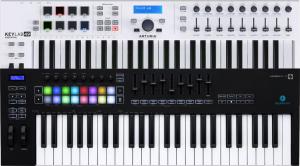
Comments
We have removed the Shure
Submitted by Jason Horton on
We have removed the Shure GLXD16 from the recommended list due to it having been discontinued.
Publication of our November
Submitted by Jason Horton on
Publication of our November 2021 Edition resulted in the following wireless system coming off the recommended list above: Line 6 Relay G55
As a result of our December
Submitted by Jason Horton on
As a result of our December 2020 update, the following systems came off the recommended list above, but you can still see our analysis of them:
Today we removed the
Submitted by Jason Horton on
Today we removed the following from the recommended list above due to being discontinued, but you can still read our analysis of it: Sennheiser EW 172 G3.
The following system has been
Submitted by Jason Horton on
The following system has been removed from our recommended list above due to a lack of availability: Sennheiser XSW 72 Instrument Set.
As a result of today's update
Submitted by Jason Horton on
As a result of today's update to this guide, the following wireless system was removed from the recommended list above: Audio Technica ATW-1501.
The shura Glx 16 will not
Submitted by John k (not verified) on
The shura Glx 16 will not work properly in a venue that has wifi
We tried to use it in casinos and in bars and outdoors and it worked less than 50% of the time
Sennheiser and audio technica worked great under same conditions
Interesting point - but was
Submitted by Jason Horton on
Interesting point - but was it the actual system that made a difference, or was it because when you changed systems you also changed the frequency you were using?
Could be, but I too have had
Submitted by Baba Claxton (not verified) on
Could be, but I too have had dropout issues using 2.4gHz wireless in high wifi areas like casinos, and my old Sennheiser G2 system has been flawless in those and all situations.